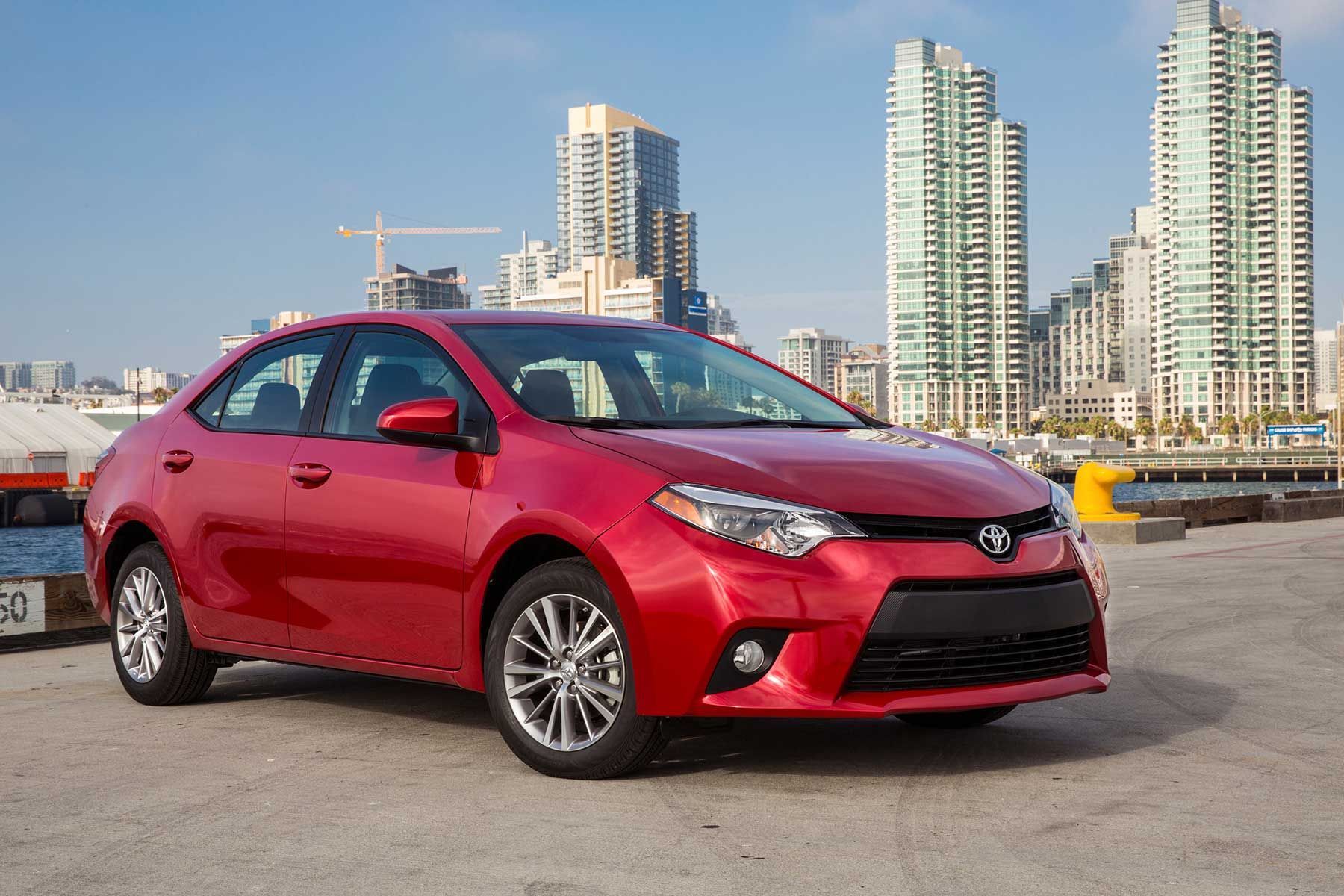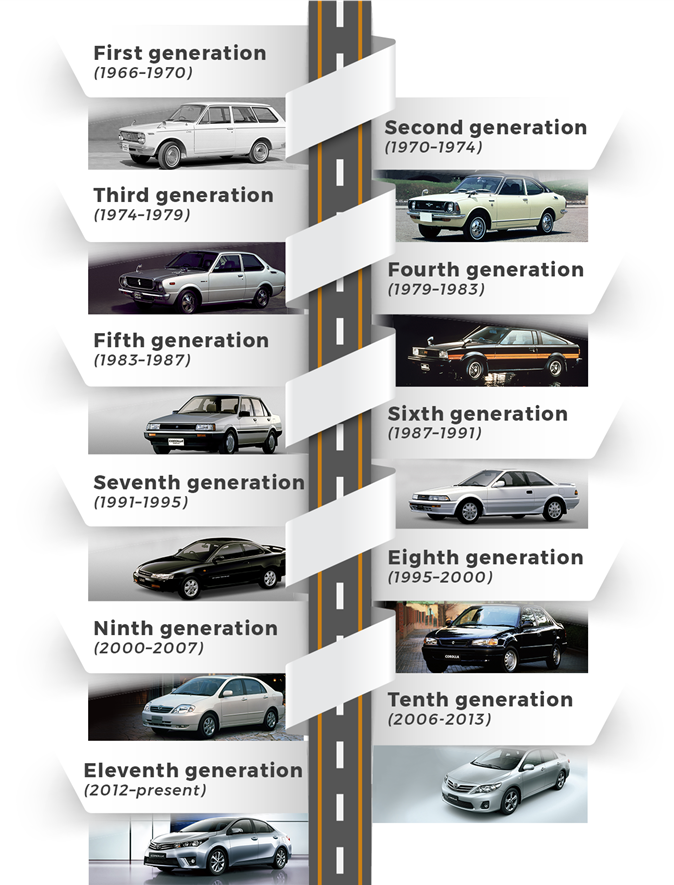History of the Corolla
August 17 2021, Kentville Toyota

Would you believe that there have been no less than a dozen generations of Toyota Corolla since it first appeared in the 1960s?
Often derided in its modern form for long periods of being beige and bland, there are nonetheless several bright spots in this car’s history — and its importance to Toyota as a sales leader and pioneering model cannot be overstated.
The Toyota Corolla has a long history of dependably serving the Nova Scotia market area ever since it first hit Canada in 1988. As one of the longest-running models in the Toyota line, the Corolla has done much to build up the company’s reputation as the premier designer of well-built and reliable automobiles and remains a flagship vehicle for Toyota and its fans. That’s also part of what’s made Kentville Toyota such a hot spot for prospective drivers as far off as Yarmouth and Sydney: you know that, when you buy one of our Toyota vehicles, you’ll be driving off the lot with a car that’ll last a lifetime. So let’s take a look at the history of the Corolla, and its development over the last number of years.
Generation One
1966: The very first Toyota Corolla is built in Japan, in the form of a four-door coup. Small, simple, and stylish, the Corolla emanated practicality and durability.
1968: The Toyota Corolla finally arrives in the United States, firmly denying the widely-held myth that Japanese cars were shoddy. Meanwhile, the Corolla Sprinter is made in Japan only, showcasing the model’s sportier side.
Generation Two
1970: Trying to appeal to American tastes, the Corolla went through a redesign, gaining a bit more size as well as a more powerful engine and automatic transmission. It soon becomes the second best-selling car in the world.
1971: The Corolla engine gets an upgrade, moving from a 1.2-liter, 73 horsepower design to a 1.6 liter, 102 horsepower model.
1972: The grille receives an elaborate redesign.
Generation Three
1974: The Corolla enters the 70’s the way many other manufacturers did—getting rounder, bigger, heavier, and more pronounced.
1975: In order to meet changing emissions standards, the ’75 Corolla becomes the first one to sport a catalytic converter.
1976: The Toyota Corolla “Liftback” is introduced—a three-door hatchback model that resembled the sporty station wagon look that was popular at the time.
Generation Four
1979: Just in time for the 80’s, the Corolla gets a major redesign, simplifying the overcomplicated front-end and reshaping the chassis to a more angular shape. The engine is also upgraded to a 1.8-liter, 75-horsepower model.
1982: The automatic transmission gets a surprising upgrade to a four-speed unit, adding a level of sophistication to the economy car.
Generation Five
1984: The Corolla GT-S is introduced, featuring a dual-overhead cam, 16-valve edition of the standard 1.6-liter, bringing with it a burly 124 horsepower and establishing the GT-S as one of the most beloved Corolla models, particularly among Japanese “drifters”.
1987: The front-drive Corolla “FX” coupe debuts, marking the beginning of North American Corolla production.
Generation Six
1988: The last remaining rear-drive Corolla models are replaced with front-drive models, updating them to a smoother and more capable ride.
1990: Every Corolla model is upgraded with fuel injection technology, and every engine gets a horsepower boost as well—the standard up to 102 hp, the GT-S up to 130 hp.
Generation Seven
1993: The Corolla sedan and station wagon increase in size, moving from “subcompact” to a “compact” as per EPA standards. The sedans specifically are now offered in a standard, DX, and LE trim.
1996: The manual transmission is upgraded for an improved feel.
1997: The DX sedan trim is discontinued, replaced by a special Classic Edition trim that came standard with several popular features.
Generation Eight
1998: The Corolla increases size but gets lighter in the process thanks to its all-new aluminum 1.8 DOHC four-cylinder engine. Its 120-hp was a massive improvement over the previous standard, but the real boon was in fuel efficiency: the new engine was capable of 31 MPG city and 38 MPG highway.
2000: VVT-I variable valve timing is added to the standard engine, boosting it to 125 horsepower.
Generation Nine
2003: The latest Corolla remodel goes for a more spacious and powerful design meant to attract younger drivers, while still maintaining the smooth ride and top of the class fuel economy that has become the Corolla standard.
2005: The XRS trim debuts, offering a 170-hp 2.4-liter four-cylinder engine carried on sport-tuned suspension.
Generation Ten
2009: The Corolla receives some evolutionary updates in time for the new decade, with a boosted engine and standard five-speed manual transmission, as well as modern amenities like keyless startup and a navigation system The XRS trim is also brought back.
Generation Eleven
2014: The Corolla goes though a thorough redesign, with an all-new modern appearance and several improvements in amenities, such as making keyless entry a standard feature. Best of all, the Corolla receives an updated continuously variable transmission (CVT), drastically improving mileage—the LE Eco trim was capable of 42 MPG highway.
2016: In celebration of the line’s 50th anniversary, the Corolla introduces two new models: the Refreshed 2017 Corolla XSE and the 50th Anniversary Special Edition, both of which offer forward-facing style and technology while still representing the best of the Corolla name—efficiency, reliability, and fun.
At Kentville Toyota, we’re proud to stock the latest models of the historic Toyota Corolla brand for Nova Scotia drivers. Come out to our lot, located at 843 Park St, Kentville and take a spin for yourself. And if you have any questions, contact us online or over the phone at 888-490-7860.


